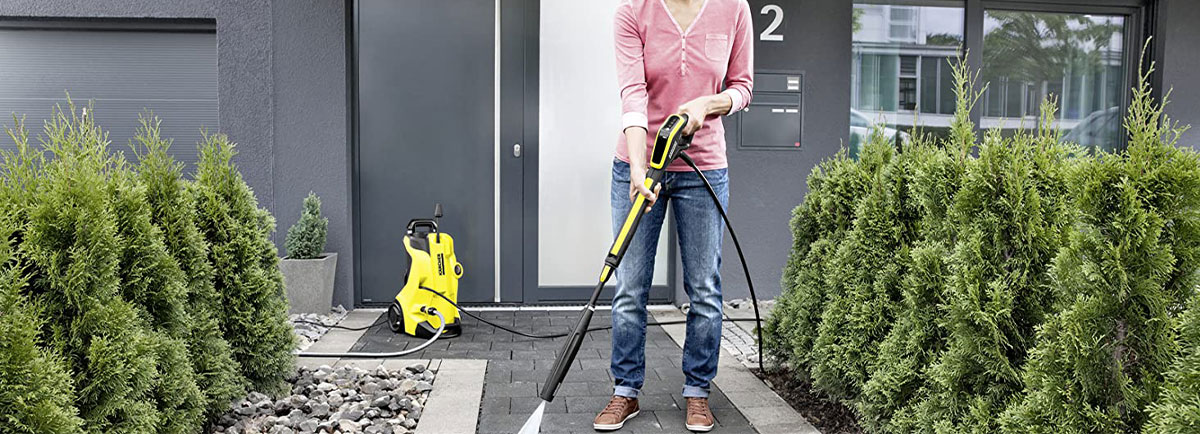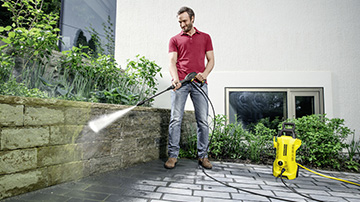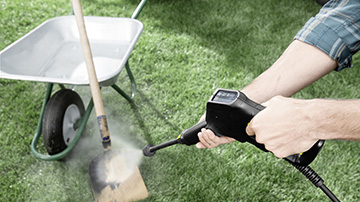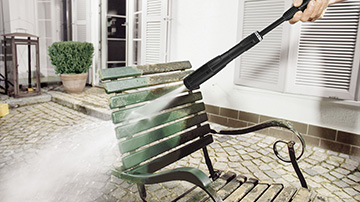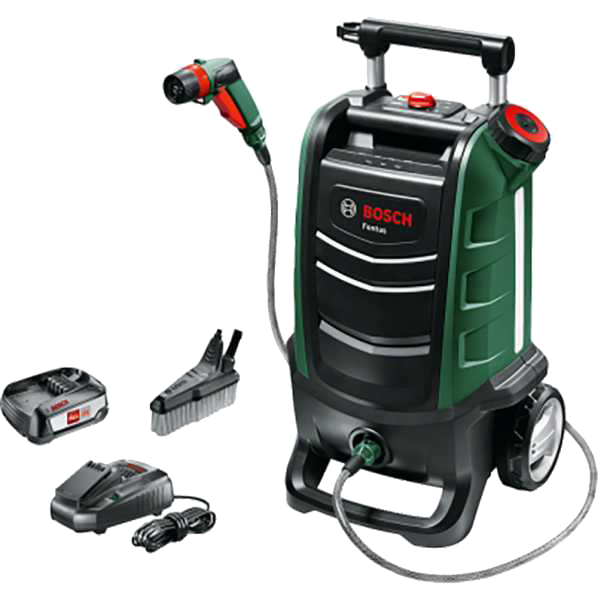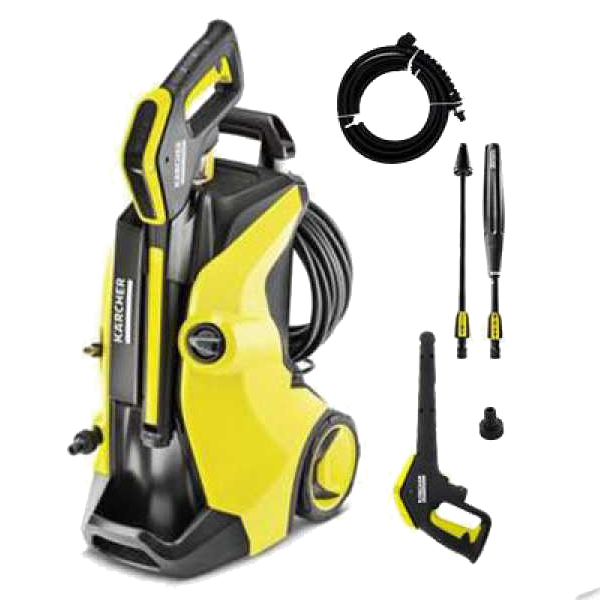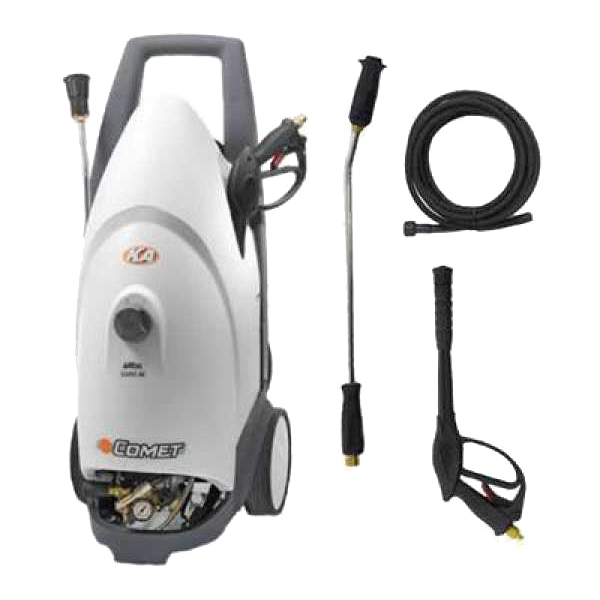A comprehensive guide to purchasing the best cold water pressure washer, with many useful tips and information.
The Complete Guide to help you choose the Best Cold Water Pressure Washer
by the Real Experts of Indoor Cleaning and Maintenance
CONTENTS
1. Introduction
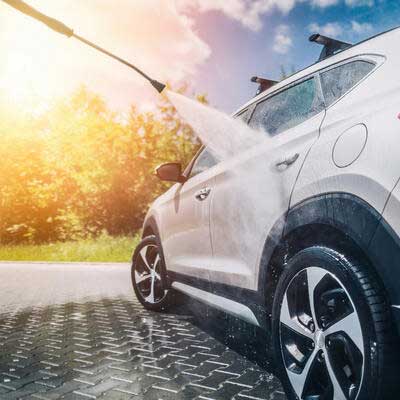
The care and cleaning of outdoor areas and equipment requires the use of suitable tools in order to achieve satisfactory results. Therefore, when it comes to thoroughly cleaning large external surfaces (such as floors or facades of a house), garden equipment and furniture, cars/motorcycles, etc. the most suitable tool is undoubtedly the pressure washer.
We are talking about a versatile machine that uses the high water pressure – generated by an internal pump powered by the motor – to carry out an effective cleaning operation, especially in situations of particularly stubborn dirt.
Whereas in the past the pressure washer was used almost exclusively for washing and cleaning cars, today this tool is used in a wide variety of outdoor cleaning situations.
The purpose of this guide is to help you choose the best electric cold water pressure washer.
2. Cold water pressure washers
Electric cold water pressure washers do not change the temperature of the inlet water, which maintains the same temperature as the one provided by the domestic water supply, and represent the most widespread type on the market as well as the best-selling. They exploit water from the normal domestic water supply which, when used at high pressure, provides a high cleaning capacity.
These are the classic pressure washer models (therefore, equipped with single-phase power supply) indicated for hobby users who normally make a standard use of these machines at home: they stand out to be the smallest, most practical and, generally, also the less expensive ones.
They have a wide range of applications thanks to the many accessories available and can be used for cleaning:
- walls and driveways;
- cars, motorcycles and bicycles;
- agricultural equipment;
- garden furniture;
- and, in general, in all those situations where dirt is difficult to remove.
In addition to the machines intended for domestic/hobby use, there also are highly professional cold water pressure washers (with three-phase power supply), used in a wide variety of work sectors such as construction, industry, etc.
Usually, the first element to be assessed in a high-pressure cleaner is the pressure delivered, but the flow rate should also not be overlooked: these are indeed the characteristics that best identify the machine’s power level (we will discuss these characteristics later).
In addition to these two elements, there are also other factors that should be taken into account when choosing a pressure washer, such as the specifications of the motor, the frequency and intensity of use and the surfaces to be cleaned. In order to provide a general guideline for purchasing, we refer to the following classification table:
| Level | Maximum pressure | Maximum flow rate | Power supply | Motor power | Motor type | Work intensity | Work surface | Use |
| LOW | Up to 120 bar | Up to a 6-7 L/min | Single-phase 230V | 1,5 kW | Brush motor | Limited | Up to 20 m2/h | cars/scooters/bikes/garden tools |
| MEDIUM LOW | 120-140 bar | 7-8 L/min | Single-phase 230V | 1,5-2 kW | Brush motor | Occasional | 20-30 m2/h | cars/scooters/bikes/garden tools |
| MEDIUM | 140-160 bar | 8-9 L/min | Single-phase 230V | 2-2.5 kW | Brush or Induction Motor | Moderate | 30-40 m2/h | Previous level + large cars/motorcycles/exterior surfaces |
| MEDIUM HIGH | 160-180 bar | 9-10 L/min | Single-phase 230V | 2,5-3 kW | Brush or Induction Motor | Frequent | 40-50 m2/h | Previous level + trucks/various equipment/large external surfaces |
| HIGH | 180-200 bar | 10-11 L/min | Three-phase 400V | 3- 3,5 kW | Induction Motor | Very frequent | 50-60 m2/h | Vehicle fleet/industrial equipment/large surfaces |
| VERY HIGH | Over 200 bar | Over 11 L/min | Three-phase 400V | Over 3.5 kW | Induction Motor | Continuous | Over 60 m2/h | Vehicle fleet/industrial equipment/large surfaces |
In order to make the right purchase choice of the best pressure washer, it is necessary to understand what sets the various models of cold pressure washers apart and identify the characteristics that must be present in the model to be purchased.
3. Power supply/operation
Among the pressure washers with electric operation, we make a distinction between battery-powered and electric types, which in turn can be single-phase or three-phase. Let’s examine these in detail:
- Battery-powered – Battery-powered pressure washers do not need a power outlet to be operated and are therefore portable, comfortable and easy to transport. These machines are characterised by a low operating pressure and a low water flow rate, however sufficient to carry out small cleaning tasks at home. They are excellent for cleaning cars, bicycles, exterior surfaces of the house or garden tools. However, their autonomy is lower compared to the other “classic” electric pressure washers, due to the high energy absorption required to deliver the operating pressure.
- Single-phase – This is the classic 230V single-phase household power supply and is typical of most electric pressure washers. These machines can achieve good power levels and are mainly intended for hobby use.
- Three-phase – This type of power supply uses 400V three-phase current (i.e. for professional and industrial use) and allows intensive and continuous use of the machine without problems of overheating or power loss that might otherwise occur with single-phase models.
4. Pressure and flow rate
Pressure is the most immediate indicator of the power and cleaning capacity of a pressure washer. It is measured in bars and indicates the force with which water is delivered; generally speaking, higher pressure means a more powerful jet of water and therefore better cleaning performance. For convenience, we classify the different pressure levels as follows:

- Up to 120 bar → Low pressure
- 120- 140 bar→ Medium-low pressure
- 140/160 bar – Medium pressure
- 160- 180 bar→ Medium-high pressure
- 180/200 bar – High pressure
- Over 200 bar → Very high pressure
Be careful, however, not to exaggerate with excessive pressure in relation to the type of surface to be cleaned, otherwise you may run the risk of damaging delicate surfaces with an excessive violent jet.
The flow rate is often overlooked but , on the contrary, it should be taken into account perhaps more than the pressure itself, as it better expresses the real cleaning capacity of the pressure washer. This figure refers to the amount of water delivered by the pump and is measured in L/min (or L/h). Machines with a high flow rate have a much stronger jet and wash much more than those with limited flow rate. To facilitate understanding, we classify the different levels of flow rate as follows:
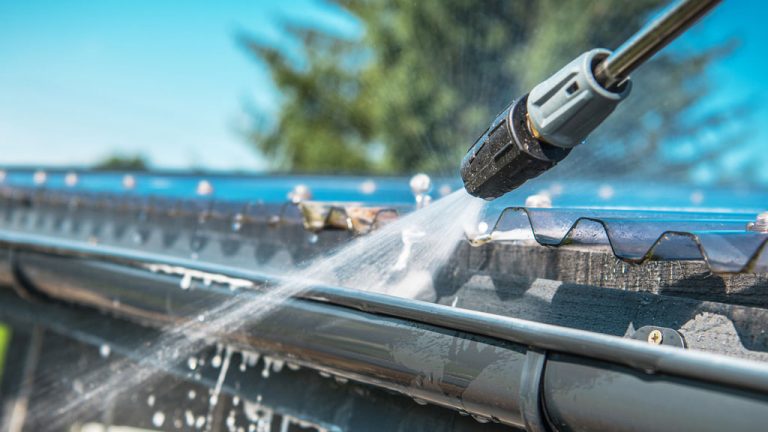
- Up to 6-7 L/min → Low flow rate
- 7-8 L/min → Medium-low pressure
- 8-9 L/min → Medium pressure
- 9-10 L/min → Medium-high pressure
- 10-11 L/min → High pressure
- Over 11 L/min → Very high pressure
Which one is more important: pressure or flow rate?
It is a fact that heavy-duty pressure washers will almost always have both higher pressure and flow rates than hobby-grade machines.
If you want to compare two or more models at the same level of use (e.g. two or more semi-professional machines) with different pressure and/or flow rates, a simple calculation can be made to find out which high-powered pressure washer has the greatest overall power, i.e. multiplying the pressure by the flow rate. The machine that returns the highest result can be considered, in a sense, the most powerful one.
In our opinion, if we had to determine which of these two characteristics is the best, perhaps we would choose the flow rate because – in terms of aggressiveness on a surface – a jet with a high flow rate will probably be less aggressive than one with high pressure. Therefore, choosing a model with a higher flow rate rather than higher pressure would give us some peace of mind about the extent of any damage caused by improper use of the pressure washer.
However, we do not recommend the purchase of a product that is oversized (in general terms of power) in relation to the real needs of use.
5. Electric motor
Brush or induction motor
- The brush motor is the less expensive type and is present in all hobby-end machines.
- The induction motor (also called “brushless”) is much silent and, due to the lack of brushes, requires less maintenance. It is certainly more durable but also more expensive and is fitted in semi-professional and heavy-duty level machines. In industrial-grade pressure washers, it can be found in a 2 or 4-pole version (which allows the speed to be further reduced for the same power output)
Revolutions per minute (RPM)
It is usually directly proportional to pressure and flow rate (the higher these values, the greater the power of the electric motor); it is expressed in kW (or Watts) and measures current consumption.
It is not as important as pressure and flow rate; however, especially for private users, we recommend to pay close attention to this figure, in order to avoid purchasing a pressure washer with a level of absorption that exceeds the current power available in the domestic power supply (most often 3 kW). As a rule, all hobby and semi-professional level machines have a power absorption below this threshold.
Motor power (kW)
It indicates the number of revolutions per minute of the motor and there are two levels of classification:
- High regime (3,400 or 2,800 RPM), less performing
- Low regime (1,400 or 1,450 RPM), more performing
Since all brush motors have a high rotation speed, this data is only relevant for induction motors.
A low rotation speed translates into greater efficiency and durability, not only of the motor, but also of the pump. Low-speed motors are only found on the best-equipped versions of heavy-duty pressure washers.
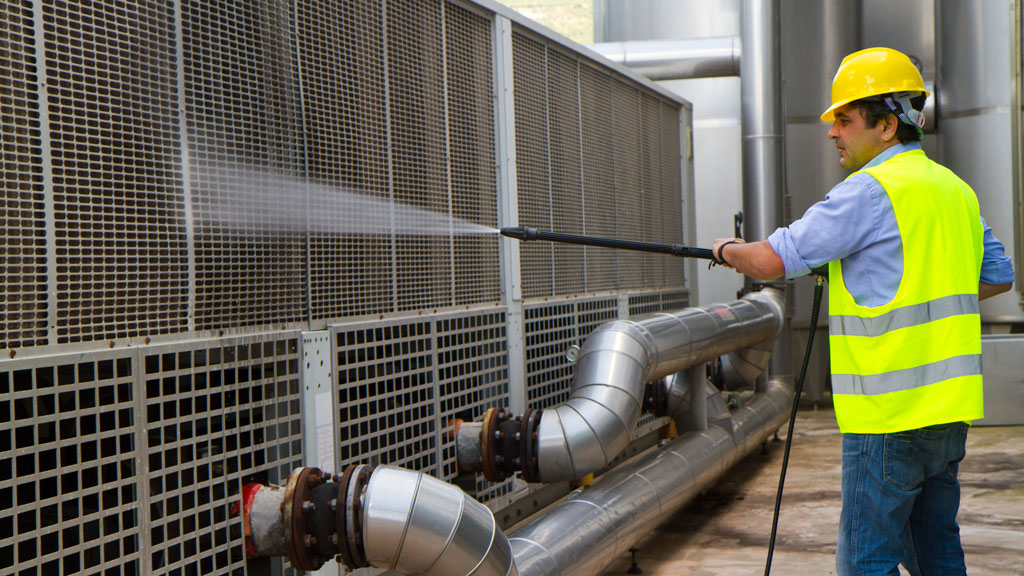
6. The pump
The pump is certainly one of the most important elements of a pressure washer and its function is to generate a high-pressure outlet water jet.
There are two main types of pumps:
- axial (or with axial pistons): it is the most widely employed as well as the most cost-effective and is fitted in all hobby models; it can also be found in some semi-professional models where, if combined with an induction motor, it is still indicative of a good quality product;
- linear (or with inline pistons): this is the highest performance solution and is found in heavy-duty models.
The pistons can be made of steel or ceramic:
- steel pistons are the most widely used, as they offer a good machine durability at a low cost; they are mounted in hobby and semi-professional pressure washers;
- ceramic pistons ensure a very high machine durability, low friction and, in general, better performance. They are mainly used in heavy-duty models.
The material of the pump cylinder head is also an indication of the level of the machine:
- the plastic head is the less expensive type (suitable for occasional and non-continuous use of the pressure washer) and is typical of hobby models;
- the aluminium head can be considered of a mid-level;
- the brass head is by far the most durable and resistant to high pressure (brass is in fact one of the hardest and most resistant metals in nature) and is fitted in heavy-duty machines.
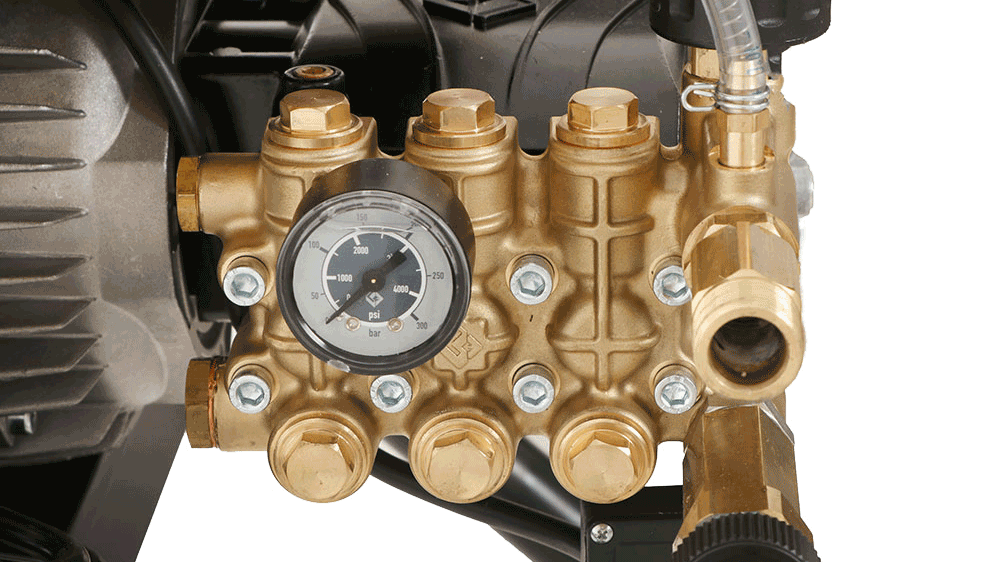
7. Main brands
In the cleaning machinery market there are several manufacturers that produce and/or market pressure washers. Given that all the major brands offer good quality products, in this purchasing guide we believe it is worth taking a closer look at those that are generally known as the main manufacturers who offer a complete range, from hobby to heavy-duty models.
- Lavor
The cold water pressure washers by Lavor, one of the leading Italian brands in the production of cleaning machinery, are designed with particular attention to practicality of use and the easy and effective performance of any type of outdoor work, offering machines that are efficient and easy to transport.
These machines are intended both for the private consumer (looking for high quality and high performance at a competitive price) and for the more demanding user for cleaning works in professional contexts. To better understand the best product range for your hobby and professional needs, Lavor offers the Lavor Washing Level, a system which categorises the various models according to performance and purpose of use. This is a scale that goes from 1 to 6 and expresses the level of washing that can be achieved by each model taking into account an appropriate mix of performance (pressure, flow rate and power consumption).
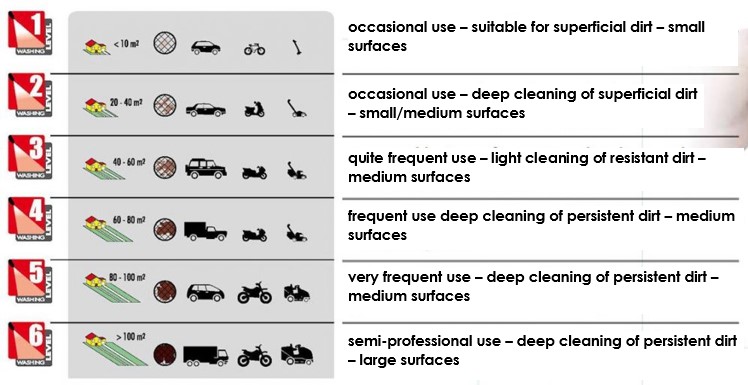
- Kärcher
Kärcher cold water pressure washers at hobby and semi-professional level (“yellow range”) are divided into performance classes ranging from K2 to K7. The smaller K2 line is recommended for cleaning small objects; as you move up the scale you gradually get close to more powerful machines until you reach the K7 line which, with the help of special accessories, is intended for more intensive use.
Kärcher heavy-duty models, on the other hand, are part of the “grey range”.
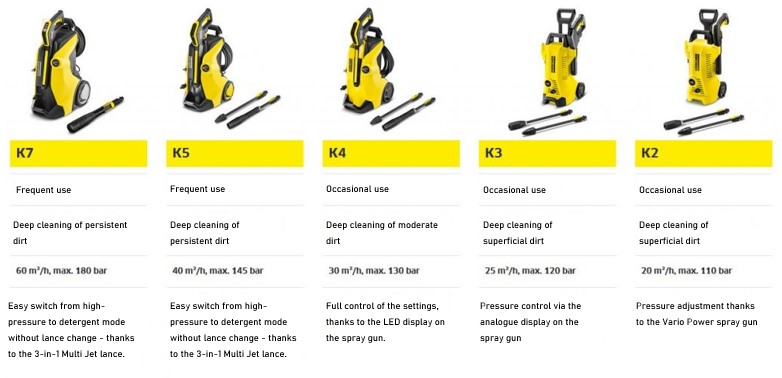
The range of Kärcher cold water pressure washers covers all price ranges and possible types of use and is mainly divided into 4 series: Classic series, Compact series (enclosed in a smaller and more compact space), Full Control series (with pressure adjustment on the spray lance, Plug n’ Clean system and – in the premium version – built-in hose reel) and Full Control Plus series (where the user can adjust the pressure and detergent dosage directly on the spray gun).
- Comet
Comet is one of the major brands in the manufacture of cleaning machinery, as well as a leader in the design and construction of pumps for agriculture and industry.
Comet cold water pressure washers’ construction and components are strictly made in Italy and are intended both for private consumers looking for high quality and high performance and for professionals looking for reliability, durability and maximum performance. The Comet range is divided into 4 categories:
Blue series commercial
In terms of performance and components, they are suitable for domestic or semi-professional use (models KRM, KRS, KRX, KLS, KL, KSM, KS, KT and KA belong to this line).
Blue static/ portable Series
They do not have wheels but are very easy to handle and transport and can also be wall-mounted.
Blue series professional
These are machines intended for continuous use: K 200 models are suitable for less heavy use, while the K 250 and K PREMIUM models are built to withstand more intensive use.
Blue series K Steel
These are models for continuous heavy-duty professional use, indicated for the most demanding professionals; extremely resistant, they feature a painted steel frame and a stainless steel cover.
- Annovi Reverberi
Annovi Reverberi is an international leader in the sector of diaphragm pumps for agriculture and piston pumps for industrial washing, and today also boasts a significant presence in the cleaning sector with its pressure washers, for both private and professional use. It is full-fledged one of the leading brands of Made in Italy cleaning products.
The Annovi Reverberi cold water pressure washers represent a range of products designed in detail to ensure ease of use and extreme reliability in the domestic or professional context with models that can satisfy both the needs of a hobby user and of professionals who work with these machines on construction sites, workshops, etc.
Annovi Reverberi has its own performance level rating system for the Home&Garden line of pressure washers, the Blue Clean Level, which takes into account the ratio between the frequency of use (occasional, daily, semi-professional, almost frequent and frequent), the size of the surface (from small to large) and the intensity of the dirt to be treated (superficial, stubborn, very firmly encrusted and deep-seated) together with the possible applications.
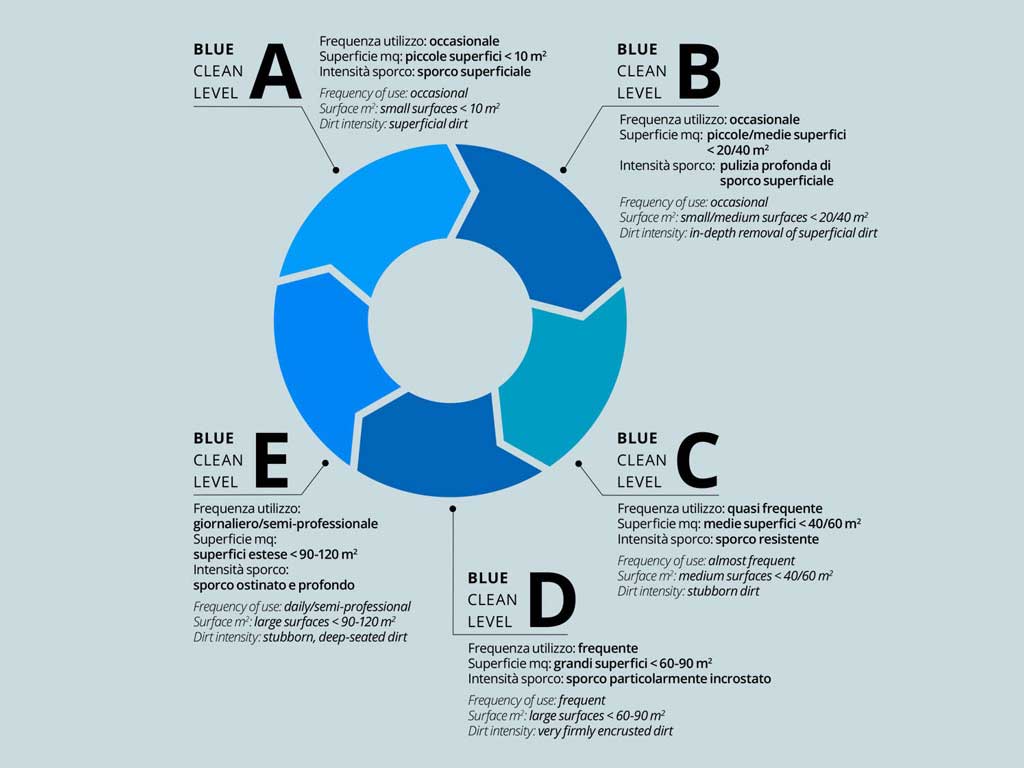
8. Accessories
There are various accessories (as standard or sold separately) that can “enhance” a pressure washer in terms of functionality and performance.
However, there is no standard rule on the range of accessories that come with a pressure washer: obviously the more standard accessories provided with the machine, the higher the price.
Some models are sold with complete accessory kits, such as the one for cleaning large surfaces (which may include, for example, large surfaces patio cleaner lance, the extension hose, a specific detergent, etc.).
However, not all the accessories of a pressure washer can be useful for all customers in the same way, so it is advisable to carefully assess the circumstances in which you want to use the machine and then direct your choice towards a model that offers the right tools for your needs, leaving out those that would certainly not be used.
Below is a brief overview of the main accessories of a pressure washer:
- Multi Jet/variable angle spray lance
allows you to adjust the power of the jet by simply turning the nozzle; - Rotating nozzle
concentrates all the water flow on a single point, which is rotated quickly; - Detergent tank
in some cleaning works and on certain surfaces, the use of a special detergent can also significantly expand the cleaning power of the pressure washer; - Sand blasting lance
allows the machine to be used as a hydro-sandblaster for washing and removing paint, rust, ink and particularly stubborn encrustations from surfaces; - Pipe cleaning probe
offers the possibility of using the pressure washer for dislodging and removing dirt from pipes, sewers, sinks, drains; - Brushes for surfaces and floor scrubber dryers (e.g. patio cleaner lance)
ideal for cleaning small to large surfaces (such as outdoor floors).
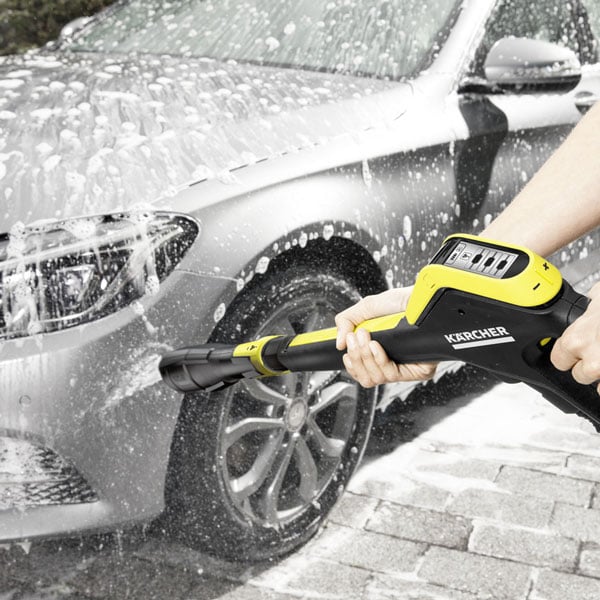
Multi Jet lance 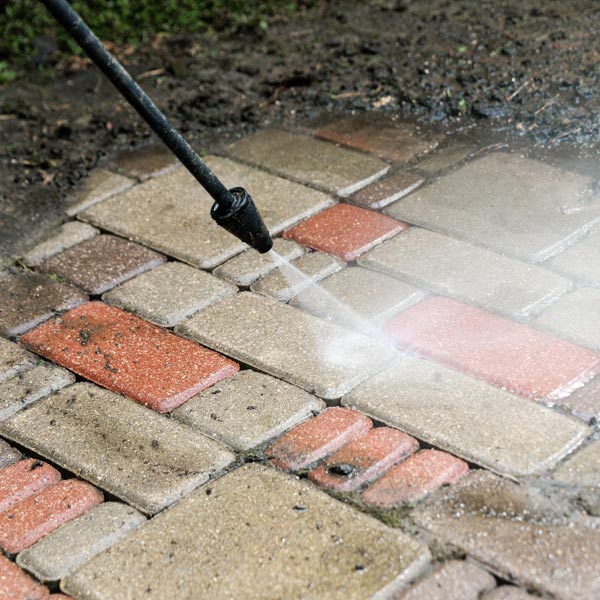
Rotating nozzle 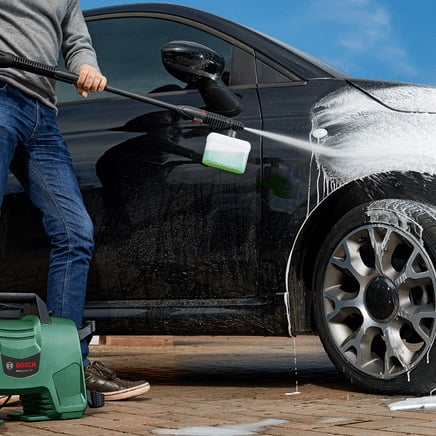
Detergent tank
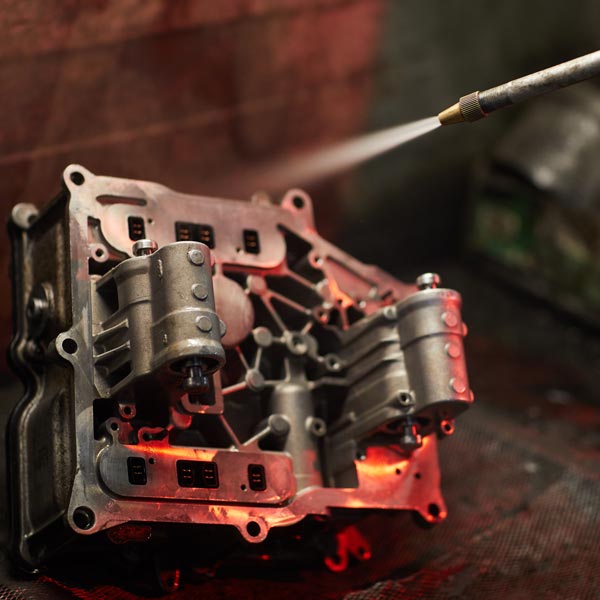
Sand blasting lance 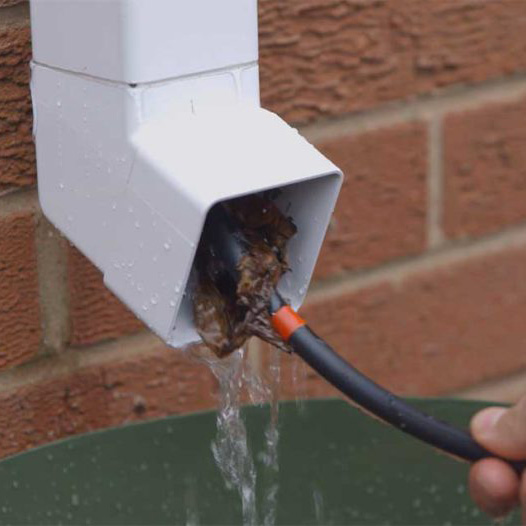
Pipe cleaning probe 
Patio cleaner lance
9. Functionality
The main features that can further complement a cold water pressure washer are:
- Built-in hose reel
facilitates collection of the hose and allows easy storage; - Pressure regulator
enables the outlet water pressure to be adjusted and is particularly useful when it is necessary to work on different types of surfaces that require different treatments (and therefore working pressures); it is generally only found on heavy-duty level pressure washers that are able to reach very high operating pressure levels; - Delayed Total Stop
Usually, when the spray gun is released, the water supply is immediately interrupted, with consequent blockage of the machine and all its internal components (pump, motor, etc.); continuous interruptions and restarts at short intervals have a negative effect on the durability of the machine.
On the other hand, in heavy-duty pressure washer models where this function is present, the water supply is not interrupted immediately but takes place with a delay of a few seconds after the spray gun is released, thus allowing it to be opened and closed continuously without the machine going into immediate lockout: in this way there is greater energy saving and a longer life span of the pump is ensured.
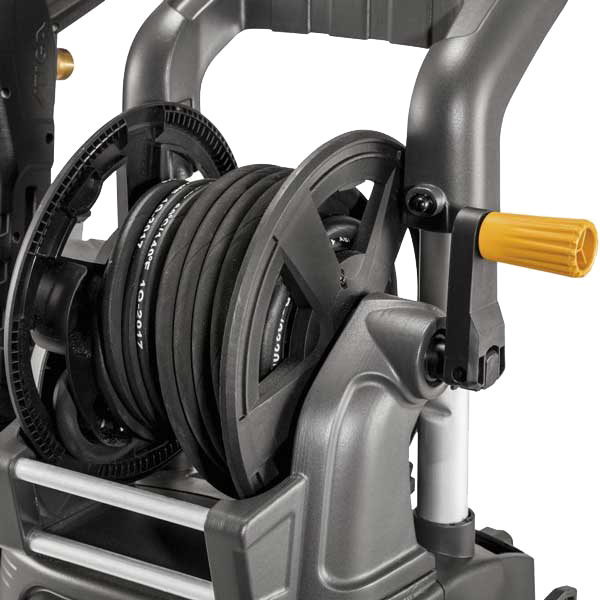
Built-in hose reel 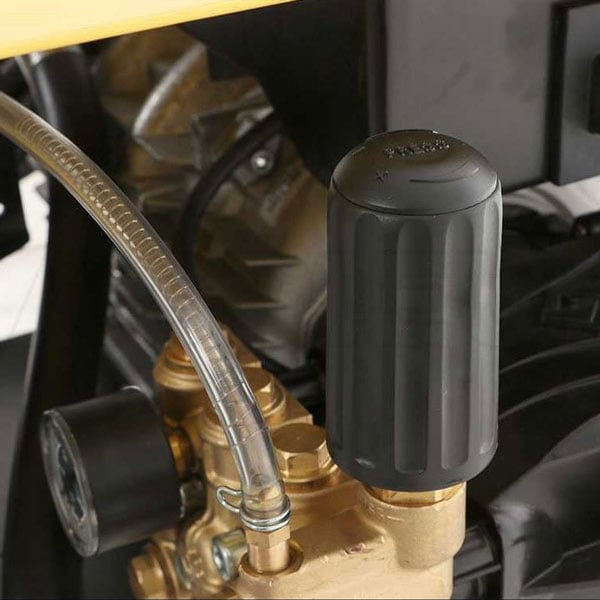
Pressure regulator



